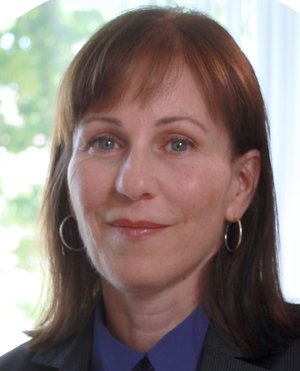The Other Victims of the Opioid Epidemic
/By Katie Burge, Guest Columnist
Imagine the fear, frustration, helplessness and anger you might feel upon learning that your doctor cannot treat you to the best of his or her ability because they’re afraid of being arrested.
I don't have to imagine that because I am a chronic pain patient with a degenerative spinal condition, plus severe osteoarthritis and fibromyalgia; each of which cause severe chronic pain 24/7. Combined, they can make simple tasks like getting dressed in the morning sheer torture.
Pain patients are the other victims of the so-called opioid epidemic, the ones the media usually don’t mention unless they're blaming us for other people's drug usage.
Patients are being forced to live in agony and, as a result, increasingly lose their lives due to catastrophic medical events, such as stroke, heart attack and even suicide.
These can all be triggered by the physical, mental and emotional pressures of trying to survive with inadequately treated chronic pain.
Why? Because politicians and bureaucrats (who refuse to admit the government is completely impotent at controlling the proliferation of illicit drugs) have managed to sell the public on the ridiculous premise that refusing medically necessary medication to one group of people will somehow alter the behavior of another group, and handily end America's drug crisis.
This approach simply does not work. Torturing vulnerable pain patients by refusing them life-giving medication will never make the slightest dent in the illegal drug trade because, sadly, people who want to get high will find something somewhere that will enable them to do so.
Also, most of the prescription opioids that people abuse DO NOT come from doctors or pain patients. Less than one percent of legally prescribed opioid medication is diverted. People in true pain are not going to suffer additionally by sharing or selling their medication. And doctors are not as careless with their prescription pads as the powers-that-be would like you to think.
Nonetheless, the entities that control doctors’ licenses to prescribe opioids have yielded to political pressure by ordering doctors to either cut back on pain medication to the point that it's ineffective or stop opioid treatment altogether, regardless of patient need or outcome.
Inadequately treated chronic pain has stolen a great deal of my independence and quality of life, and though I hate the idea of taking pain medication at all, my greatest desire is to simply be able to fully participate in my own life again. I will never be pain free, but I long to be able to play with my grandchildren, go to the theater or sit through an entire movie (and still be able to walk back to my car).
The mainstream media is also responsible for the ridiculous narrative that opioids have no legitimate clinical use and are immediately addictive. The result of this bias and hyperbole is that most folks believe outlawing the legitimate medical use of opioids can only be a good thing. Society teaches us that pain is somehow shameful. We must “suffer in silence” and learn to control our pain without complaint or medical intervention.
With such an abundance of myth and misinformation, it's no small wonder that actual facts about pain tend to get lost in the mix. Please allow me to share a few:
First, many overdose deaths are made to sound as though they were caused by a single prescription or even a single dose of opioids, when they are actually the result of a mixture of different medications, street drugs and alcohol.
Second, chronic pain affects more Americans than heart disease, cancer and diabetes combined. And studies have repeatedly shown that less than 4% of those who take opioid medication for pain become addicted. They might develop a dependence or tolerance, but that occurs with many medications.
Physical “dependence” simply means that, if a drug or substance is stopped abruptly, the body will react by exhibiting withdrawal symptoms. “Tolerance” occurs over time, as the dosage of some drugs might need to be adjusted as the body grows tolerant to its effects. Neither of these conditions is unique to opioids, nor are they necessarily indicative of addiction -- which is characterized by compulsive drug seeking behavior and use, despite harmful consequences.
Personally, I believe the question of addiction simply comes down to motive. If your primary motive in taking opioids is to get high, you might be a drug addict. If your only motive is pain relief and once that relief is achieved you do not increase the dose, you are not a drug addict.
Drug abuse is a complex social issue that has no easy fixes. It should not, however, be confused with the medical management of chronic pain. All life is precious and should be valued and protected, but not at the expense of others.
So, the next time your favorite TV show has a story line about someone going to the hospital and being transformed into a raving drug addict, or you hear yet another biased news story about opioids, do something about it. You can help save lives by contacting the source of those fallacies and insisting that they tell the whole truth about the opioid crisis. Call them. Write a letter. Send an email.
We desperately need your voice, your prayers, your empathy and your compassion.
Katie Burge lives in south Mississippi, which she calls a “a veritable wasteland” for pain treatment.
Pain News Network invites other readers to share their stories with us. Send them to editor@painnewsnetwork.org.
The information in this column should not be considered as professional medical advice, diagnosis or treatment. It is for informational purposes only and represents the author’s opinions alone. It does not inherently express or reflect the views, opinions and/or positions of Pain News Network.




































